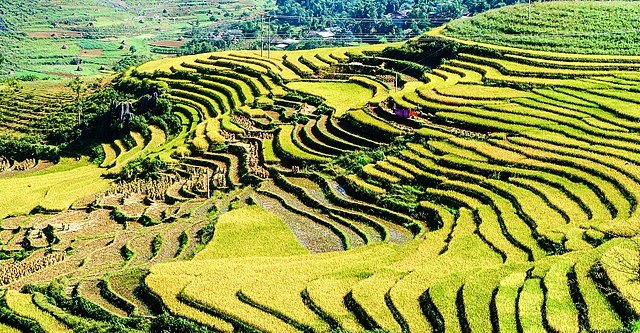Vietnam is slowly but surely tilting its rice export axis to West Africa where trade is stable amid waning demand in southeast Asia.
Turning the spoke is the indefinite import moratorium by Vietnam’s biggest rice trade partner, the Philippines, in September 2025.
According to Customs, rice dispatches to Manila this September slumped by 93.3% while the value fell 92.6%, month-on-month.
The abrupt stoppage by the PH in order to tame domestic prices coincided with quota limitations by the second largest importer, Indonesia.
This double whipping left Vietnam nursing a surplus, causing exports for September to plummet by 47% monthly, to 466,800 tonnes.
As a result, export prices by the country fell drastically as home excess forced shippers to sell at below par.
By October 15, 2025, however, export rates for 25% broken grain at $350 a tonne (t) were surpassing those for India and Thailand. For 100% broken rice, Vietnam’s $310/t was trending lower than India’s ($321/t) and Thailand’s ($316/t).
Steadiness from West Africa
Meanwhile, Nigeria, Ivory Coast, Senegal and Ghana showed steady purchases from the southeast Asia nation before quarter 3, 2025.
Ghana imported 662,000 tonnes worth $373 million from January to August, 95% above 2024’s, per the Vietnam Food Association (VFA).
The same ascribed to Ivory Coast, whose 8-month import totals rose 156% year-on-year to 754,000 tonnes.
Vrice’s marketing director, Phan Van Co, links the Africa market export surge to low policy risks and capital/logistics strengths.
Governments in Africa also favor bilateral governmental contracts, another thing that reduces private trade breaches.
So, is Africa the next major venue of quality rice from Vietnam, especially jasmine? Will it it redeem falling Viet rice export prices? The following statistics review this question in the Vietnam context.
Vietnam and Africa Rice Trade Statistics
Vietnam is the world’s fourth biggest rice exporter at $4 billion or 10.3% of the global export value share (2024). Africa, meanwhile, seconds Asia as major rice consumer, with 8 of its nations in the top 20 rice-consuming nations. In 2022, Nigeria led continental annual consumption quantity at 7.211 million tonnes, at position 11 worldwide. Vietnam, with 22.399 million tonnes in annual consumption quantity, came 6th.
Rice trade between Vietnam and Africa owes primarily to the fact that Vietnam produces surplus and exports half of production. The following table, mined from the FAOSTAT, underlines 5-year production:
| Year | Production [tonnes] |
| 2023 | 43,497,625 |
| 2022 | 42,660,798 |
| 2021 | 43,852,729 |
| 2020 | 42,764,999 |
| 2019 | 43,495,488 |
Why is Vietnam befriending Africa as a new rice market?
Weak demand in Asia in 2025 amid historically low prices forced many rice exporters turn to new markets in Africa. Vietnam, for instance, saw export rates for 5% broken rice plummet to 2-month lows mid-October 2025, to $420/t. While Africa does not guarantee price improvement, its steady trade policies and strong logistics attract Vietnam.
How much rice do select countries in West Africa consume per capita?
In the early 2020s, West Africa topped the global rice consumption per capita. Guinea in 2022 ranked 1st continental and 10th global, with consumption at 162 kg per person per year. Runners-up included Sierra Leone at 148.5 kg, Guinea-Bissau at 136.9 kg and Ivory Coast at 121.1 kg per capita.
